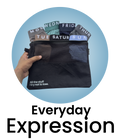Many assume a wardrobe's primary role is mere storage, yet a poorly designed system actively sabotages daily routines, turning retrieval into a frustrating excavation rather than a seamless selection. We often see luxurious walk-ins struggling with basic functionality – an abundance of shallow shelving where deep drawers are needed, or insufficient long-hang space despite a large footprint. Modern design, emphasizing adaptable modularity and intelligent space utilization, moves beyond static dimensions to integrate solutions like dynamic pull-out pantries for accessories or sensor-activated lighting. Overlooking these nuanced details, from the optimal rod height to the strategic placement of integrated laundry hampers, creates common pitfalls that diminish both aesthetic appeal and practical utility. Understanding these critical missteps. applying precise, contemporary fixes, transforms a chaotic closet into an efficient, style-elevating sanctuary.

Mistake 1: Ignoring Your Lifestyle & Needs (The One-Size-Fits-All Trap)
Ever found yourself staring at a beautifully designed wardrobe online, only to realize it's totally impractical for your life? That's the first big hurdle many people face. One of the 5 Common Wardrobe Design Mistakes (And How To Fix Them!) is adopting a "one-size-fits-all" approach, assuming a standard set of shelves and a hanging rod will magically solve all your storage woes. But here's the truth: your wardrobe should be as unique as you are!
Think about it: A student needing space for textbooks and casual wear has vastly different requirements than a business professional with a closet full of suits and formal dresses, or a parent balancing kids' clothes with their own. Trying to fit your diverse wardrobe into a generic structure often leads to clutter, creased clothes. daily frustration.
How to Fix It: Conduct a Lifestyle & Wardrobe Audit
The solution is simple but powerful: before you even think about design, take stock of your life and your clothes. Here’s how:
- Inventory Your Style Go through every item in your current wardrobe. Categorize them: How many long dresses or coats do you own? How many blouses, shirts, or pants need to be hung? How many sweaters, t-shirts, or activewear items are best folded? Don't forget accessories like belts, scarves, bags. shoes.
- examine Your Routine Are you heading to an office daily, working from home, or constantly on the go with sports and activities? Your daily routine dictates what you need most accessible. For example, if you wear uniforms, you need dedicated uniform space.
- Define Your Storage Needs Based on your inventory and routine, determine the specific types of storage you need. Do you need more hanging space (short or long)? More drawers? More shelves? Dedicated shoe storage? Perhaps a spot for dirty laundry or a pull-out ironing board?
Mistake 2: Poor Internal Organization & Lack of Specific Zones
Alright, you've got your wardrobe shell, maybe even some basic shelves and a rod. But if everything is just jumbled together, you're falling into another one of the 5 Common Wardrobe Design Mistakes (And How To Fix Them!). This mistake is all about a lack of internal organization and failing to create dedicated "zones" for different types of items.
What are 'zones'? Simply put, they're specific, intentional areas within your wardrobe designed to house particular categories of clothing or accessories. Without them, your wardrobe quickly becomes a chaotic abyss where socks mingle with scarves. jeans get buried under sweaters. It's like having a kitchen with just one big cupboard – impractical and frustrating!
| Generic Wardrobe (Mistake) | Zoned Wardrobe (Fix) |
|---|---|
| One long hanging rod for everything. | Double hanging rods for shirts/skirts, single long rod for dresses/coats. |
| A few deep, undivided shelves. | Varied shelf depths, some with dividers; dedicated drawers for folded items. |
| Shoes piled on the floor. | Tiered shoe racks, cubbies, or pull-out shoe shelves. |
| Accessories tossed into a basket. | Shallow drawers with organizers, tie/belt racks, jewelry trays. |
How to Fix It: Design for Specific Categories
The key is to think like a professional organizer. Assign every item a "home."
- Categorize and Conquer Based on your audit from Mistake 1, group similar items together. All your work shirts, all your jeans, all your activewear.
- Incorporate Varied Storage Solutions
- Double Hanging Rods For shirts, blouses, skirts. folded trousers, two rods stacked vertically can double your hanging capacity.
- Deep Drawers Perfect for folded sweaters, t-shirts, denim, or even pajamas. Using drawer dividers keeps things neat.
- Shallow Drawers/Trays Ideal for accessories like jewelry, watches, belts. ties, preventing them from getting lost or tangled.
- Adjustable Shelves For folded items, handbags, or storage bins. Make sure they're adjustable so you can change their height as your needs evolve.
- Shoe Racks/Cubby Systems Keep your footwear organized and off the floor. Pull-out shoe shelves are a game-changer!
- Utilize Inserts and Dividers Even within drawers or on shelves, dividers, bins. baskets can help maintain order and prevent items from migrating.
Mistake 3: Underestimating the Power of Vertical Space
Look up! Now look down! If your wardrobe only uses the space directly at eye level or below, you're missing out on a huge opportunity. One of the most common 5 Common Wardrobe Design Mistakes (And How To Fix Them!) is failing to utilize the full vertical potential of your closet, leaving valuable real estate completely wasted.
Imagine a tall wardrobe that only has one hanging rod at a comfortable height. Above it, there's a vast, empty cavern. Below it, maybe a few shoes are piled on the floor. still, a lot of unused space. This oversight is particularly common in reach-in closets or older homes where wardrobes weren't designed with modern storage solutions in mind. It's like buying a multi-story house and only using the ground floor!
How to Fix It: Go Up (and Down!)
Maximizing vertical space is about smart planning from floor to ceiling:
- Floor-to-Ceiling Design If possible, extend your wardrobe structure all the way to the ceiling. This provides maximum storage capacity. If your current wardrobe doesn't reach, consider adding custom cabinetry or shelves above it.
- Adjustable Shelving This is crucial. Instead of fixed shelves, opt for systems where you can easily move shelves up or down. This allows you to reconfigure the space for different items – taller boots in winter, shorter bags in summer, for example.
- Upper Cabinets/Shelves for Seasonal or Less-Used Items The very top shelves are perfect for storing off-season clothing (like heavy winter coats in summer), luggage, extra bedding, or sentimental items that you don't need to access daily. Use clear, labeled bins to keep these items dust-free and easy to identify.
- Utilize Bottom Space Don't just dump shoes on the floor. Install pull-out shoe racks, low drawers for accessories, or cubbies for bags. Even a simple shelf raised a few inches off the floor can prevent items from getting scuffed and make cleaning easier.
- Consider Pull-Down Rods For very high hanging areas, a pull-down rod (sometimes called a "wardrobe lift") allows you to bring clothes down to an accessible level, then push them back up, making upper space incredibly functional.
Mistake 4: Neglecting Lighting & Accessibility
Ever fumbled in a dark corner of your closet, trying to tell the difference between a navy shirt and a black one? Or struggled to reach that sweater on the top shelf, only for it to tumble down? This highlights another critical error in the list of 5 Common Wardrobe Design Mistakes (And How To Fix Them!) : overlooking proper lighting and ensuring easy accessibility.
A poorly lit wardrobe doesn't just make it hard to find things; it can also lead to outfit mismatches and a general feeling of disorganization. Accessibility goes hand-in-hand with this – if you can't easily see or reach an item, you're less likely to wear it, no matter how much you love it. This essentially shrinks your usable wardrobe space.
How to Fix It: Brighten Up & Reach Out
Making your wardrobe a pleasure to use involves thoughtful lighting and smart design for reach:
- Integrate Internal LED Lighting
- LED Strips These are fantastic! They can be installed under shelves, along hanging rods, or vertically along the sides of your wardrobe. They provide even, bright light without taking up much space and are energy-efficient. Many are battery-operated with motion sensors, making installation a breeze.
- Puck Lights Small, circular lights that can be strategically placed to illuminate specific sections or dark corners.
- Wardrobe Rod Lights Some hanging rods come with integrated LED lighting, offering direct illumination for your hung garments.
- Design for Easy Reach
- Optimal Depth Avoid overly deep shelves (more than 14-16 inches) unless they're pull-out. Items get lost at the back!
- Pull-Out Features Consider pull-out shelves, baskets, or even garment rods. These bring items out to you, making every corner accessible.
- Clear Bins and Dividers For items stored on shelves or in drawers, clear containers allow you to see what's inside without rummaging. Labels are your best friend!
- Adjustable Components As mentioned before, adjustable shelves and rods allow you to customize heights for comfortable access.
Why good lighting is crucial: It ensures true color perception, reduces shadows. makes it easier to spot items, saving you time and frustration.
Mistake 5: Forgetting About Future Growth & Flexibility
Life changes. Your style evolves. What works perfectly for your wardrobe today might be completely impractical in five years. One of the most insidious of the 5 Common Wardrobe Design Mistakes (And How To Fix Them!) is designing a rigid, inflexible system that can't adapt to your changing needs, leading to premature obsolescence and the need for costly renovations down the line.
Perhaps you're a young professional now, mostly wearing casual clothes. you plan to enter a more formal career path. Or maybe you're thinking of starting a family, which will inevitably bring new storage challenges (think baby clothes, then kids' clothes!). A wardrobe with fixed shelves, unmovable rods. specific, unchangeable compartments will quickly become a headache.
How to Fix It: Embrace Adaptability and Modularity
The solution here is to think long-term and build in flexibility from the start:
- Opt for Adjustable Systems This is paramount. Choose shelving systems where shelves and hanging rods can be easily moved up, down, or even removed entirely. Rail-and-stile systems, where components clip into vertical rails, are excellent for this.
- Consider Modular Components Instead of building everything in, look for modular units that can be added, removed, or rearranged. This might include standalone drawer units, stackable bins, or portable shoe racks that can be moved as your needs shift.
- Leave Some "Flex Space" Don't fill every single inch with a permanent fixture. Leaving a few empty shelves or a section that can easily be reconfigured gives you breathing room for new purchases, hobbies, or life changes. For example, a wide, open shelf can temporarily house folded items, or later accommodate a storage cube system.
- Choose Timeless Finishes While not directly about flexibility, selecting neutral colors and classic finishes for the main structure of your wardrobe ensures it won't look dated quickly. This allows you to update the "feel" with accessories or decorative items without a full overhaul.
- Think About Multi-functional Items A bench inside a walk-in closet could offer seating. also hidden storage. A pull-out mirror saves space but serves a dual purpose.
Conclusion
Transforming your wardrobe from a chaotic corner into an organized sanctuary is entirely within reach once you identify and rectify common design missteps. My own wardrobe, once a jumble of forgotten items, dramatically improved by simply re-evaluating hanging space and incorporating clever drawer dividers, a game-changer for my ever-growing accessory collection. Remember, it’s not just about acquiring more space. about utilizing smarter space effectively. Consider the latest modular systems that allow for dynamic adjustments, ensuring your closet evolves with your style needs, much like the curated versatility seen in modern capsule wardrobes. Take action by decluttering mercilessly and then investing in solutions that truly serve your current collection. For instance, if you often struggle with finding the right undergarments, optimizing that specific drawer can save precious minutes daily and set a positive tone for your outfit. By implementing these actionable fixes, you’re not just tidying up; you're cultivating a smoother morning routine and an overall elevated sense of style and calm. Embrace the satisfaction of a wardrobe that truly works for you, making every outfit choice a delight. For more on building a comfortable foundation for your style, explore our insights on ultimate comfort and flattering style in inner wear.More Articles
Inner Wear for Woman – Ultimate Comfort & Flattering StyleDress for Women – Effortless Style & All-Day Comfort
Women's Skims Tank Top – Ultimate Comfort & Versatile Style
Mens Tank Tops – Athletic Performance & Cool Comfort
Men's Low-rise Trunks – Ultimate Comfort & Modern Style
FAQs
What are some typical blunders people make when designing their wardrobe?
Many folks mess up by not planning properly, ignoring the types of items they actually own, or forgetting about good lighting. It's easy to end up with wasted space or a closet that just doesn't work for your daily routine, making it hard to find anything.
My current wardrobe feels cramped even though it's big. How can I really maximize the space I have?
A big mistake is not utilizing vertical space! To maximize, add extra shelves, double hanging rods for shorter items like shirts and skirts. consider pull-out accessories like tie racks or shoe shelves. Custom-fitting solutions can also make a huge difference in awkward corners, transforming dead space into functional storage.
I always struggle with where to put my shoes and bags. Any specific tips for those?
Absolutely! Don't just toss them. For shoes, consider dedicated shoe racks, cubbies, or even pull-out shelves at the bottom of your wardrobe. For bags, hooks on the back of doors or side panels, shelf dividers, or clear bins on shelves can keep them organized, visible. prevent them from getting squashed.
Is lighting really that crucial in a wardrobe? Mine is pretty dark.
Oh, lighting is super vital! A dark wardrobe makes it incredibly hard to see your clothes, match outfits correctly. even find what you're looking for. Adding interior LED strips, puck lights, or even a small task light can totally transform it, making getting dressed so much easier and more enjoyable.
Before I even start thinking about design, what's the very first step I should take?
The absolute first step is to take an inventory of what you own! Seriously, pull everything out. Figure out how many items you hang (and their lengths), how many fold, how many shoes you have. what accessories need homes. Then, accurately measure your available space. This intel is crucial for a functional design tailored to your stuff.
How do I make sure my new wardrobe design won't be outdated or unhelpful a few years down the road?
Think flexible and adaptable! Opt for modular systems or designs with adjustable shelves and hanging rods. This way, as your wardrobe evolves, your style changes, or your storage needs shift, you can easily reconfigure the space without needing a major overhaul, keeping it functional for years to come.
Should I just go for all hanging space or all shelves? What's the best mix?
Definitely a mix! Relying too heavily on just one type of storage is a common mistake. You need a variety: short hanging for shirts and skirts, long hanging for dresses and coats, shelves for folded items like sweaters and jeans. drawers for delicates or smaller accessories. The 'best mix' depends entirely on your personal clothing inventory.





